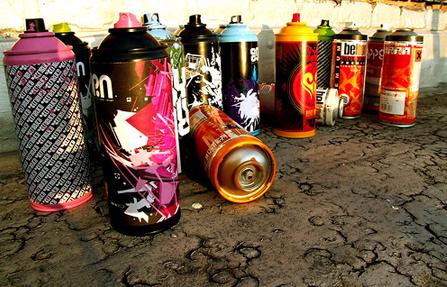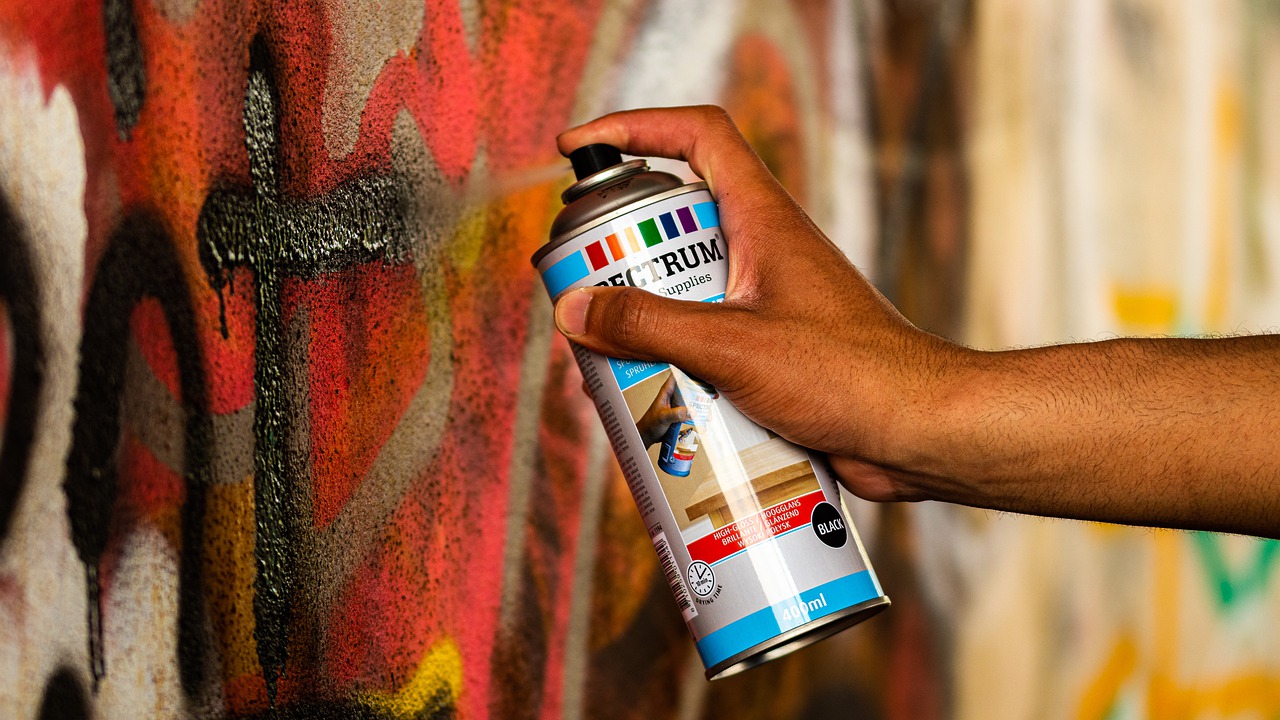Spray cans are versatile tools that are commonly used for painting, decorating, and various industrial applications. A spray can is a pressurized container that releases a fine mist of paint, primer, or other substances through a nozzle.
In this article, we will explore the different types of spray cans, their components, uses, how to choose the right spray can for your project, and how to use them safely and effectively.
The use of spray paint cans dates back to the early 20th century when they were used primarily for insecticides and cosmetics. In the 1940s, aerosol spray cans were introduced for commercial use, and their popularity quickly grew due to their ease of use and versatility.
Need To Know: How To Clean And Maintain Your Spray Paint Cans?
More About Spray Paint Topic Read Here.
Types of Spray Paint Cans

There are three main types of spray cans: Aerosol spray cans, Airbrush spray cans, and Pump spray cans.
- Aerosol spray cans are the most commonly used type of spray can. They use a pressurized canister to release the product through a valve and nozzle. They are used for a wide range of applications, from painting and decorating to automotive repair and maintenance.
- Airbrush spray cans are similar to aerosol spray cans but require an air compressor to operate. They are commonly used for fine detail work, such as in art and graphics.
- Pump spray cans do not rely on pressurized canisters. Instead, they use a hand pump to generate pressure and release the product through a nozzle. They are commonly used for household cleaning products and personal care items.
Components of a Spray Can

The four main components of a spray can are the canister, valve, nozzle, and propellant.
- Canister: The canister is the container that holds the product to be dispensed.
- Valve: The valve controls the release of the product from the canister. It can be opened or closed by pressing down on the nozzle.
- Nozzle: The nozzle is the opening through which the product is released. It can be adjusted to change the pattern and size of the spray.
- Propellant: The propellant is a gas or liquid that creates pressure inside the canister and forces the product out through the nozzle.
Uses of Spray Paint Cans
Spray paint cans have a wide range of uses across various industries and applications.
- Painting and decorating: Spray cans are commonly used for painting and decorating, as they allow for a smooth, even application of paint, primer, and other coatings.
- Automotive repair and maintenance: Spray cans are often used for touch-up painting, rust prevention, and other maintenance tasks in the automotive industry.
- Graffiti and street art: Spray cans are popular tools for creating graffiti and street art due to their versatility and portability.
- Industrial and commercial applications: Spray cans are used in a variety of industrial and commercial applications, such as lubrication, mold release, and surface preparation.
Choosing the Right Spray Can

When choosing a spray can, there are several factors to consider.
- Type of project: The type of project will dictate the type of spray that can be needed. For example, airbrush spray cans are ideal for fine detail work, while aerosol spray cans are better for larger surfaces.
- Surface material: Different spray cans are designed for use on different surface materials. For example, some spray cans are formulated specifically for use on metal surfaces, while others are formulated for use on wood or plastic.
- Color and finish: Spray cans are available in a variety of colors and finishes, so it is important to choose the right one for your project.
- Size of canister: The size of the canister will determine how much product is available for use. It is important to choose a can that is the appropriate size for your project to avoid running out of product before the job is complete.
How to Use a Spray Paint Can In A Effective Way?
Using a spray can safely and effectively require following a few key steps.
- Safety precautions: Always wear protective clothing, gloves, and a respirator when using a spray can avoid inhaling harmful fumes and chemicals.
- Preparation of the surface: The surface to be sprayed should be clean, dry, and free of any dirt, dust, or debris. Mask off any areas that you do not want to be painted.
- Shaking and priming the can: Before using a spray can, it is important to shake it vigorously to mix the product and propellant. Prime the can by spraying a small amount of product onto a test surface to ensure that the nozzle is working properly.
- Application techniques: Hold the can approximately 8-12 inches away from the surface to be sprayed and use a sweeping motion to apply the product evenly. Start and stop the spray beyond the edges of the surface to prevent uneven application.
- Cleaning the nozzle: After using a spray can, it is important to turn it upside down and spray for a few seconds to clear the nozzle of any excess product. This will help prevent clogs and ensure that the can will be ready for use in the future.
Maintenance and Storage of Spray Cans
Proper maintenance and storage of spray cans are essential for extending their lifespan and ensuring that they work properly.
- Proper storage temperature: Spray cans should be stored in a cool, dry place away from direct sunlight and sources of heat to prevent the canister from becoming over-pressurized.
- Preventing clogs in the nozzle: To prevent clogs in the nozzle, wipe the tip of the nozzle after each use and store the canister upside down.
- Cleaning the canister and valve: If the canister or valve becomes clogged, it may be necessary to clean them with a solvent or replace the valve.
- Disposing of empty cans: Empty spray cans should be disposed of properly according to local regulations. Many communities have recycling programs for aerosol cans.
Common Mistakes to Avoid When Using a Spray Can

There are several common mistakes to avoid when using a spray can.
- Over-spraying: Over-spraying can result in an uneven application of the product and waste of the product.
- Holding the can too close to the surface: Holding the can too close to the surface can cause the product to the pool, resulting in drips and uneven application.
- Using the wrong type of spray can: Using the wrong type of spray can result in poor adhesion and uneven application.
- Not following safety precautions: Not following safety precautions can result in inhalation of harmful fumes and chemicals.
Know About: What Size Spray Tip For Exterior Paint?
Environmental Impact of Spray Cans
Spray cans can have a significant impact on the environment, particularly in terms of ozone depletion and air pollution.
- Ozone depletion: Many propellants used in spray cans contribute to the depletion of the ozone layer, which can have harmful effects on the environment and human health.
- Air pollution: The release of fumes and chemicals from spray cans can contribute to air pollution, which can harm the environment and human health.
- Proper disposal methods: It is important to dispose of empty spray cans properly to prevent harm to the environment.
Conclusion
Spray cans are versatile tools that are used in a wide range of applications. Choosing the right spray can and using it safely and effectively requires consideration of several factors, such as the type of project, surface material, color and finish, and size of the canister.
Proper maintenance and storage of spray cans can extend their lifespan and help ensure that they work properly while avoiding common mistakes can help achieve better results. Finally, it is important to be aware of the environmental impact of spray cans and take appropriate steps to minimize their impact.
By following these guidelines, you can use spray cans safely and effectively to achieve professional-quality results in a variety of applications. Whether you are painting and decorating, repairing an automobile, creating graffiti, or performing industrial or commercial applications, a spray can be a valuable tool that saves time, money, and effort. With proper care and attention, a spray can be a reliable and effective tool for years to come.
References:
- A comprehensive guide to using spray paint cans from the website of Montana Cans, another popular brand: https://www.montana-cans.com/en/spray-paint/how-to-use-spray-ca
- An article from The Spruce discussing different techniques for spray painting various surfaces: https://www.thespruce.com/painting-house-exterior-with-a-brush-1821136
Jane Ansems is a highly talented and accomplished spray can artist, known for her intricate, detailed, and thought-provoking works of art. She began her career as a street artist in the early 2010s, quickly gaining recognition for her unique and innovative style.
[…] heat to spray paint cans can be an effective way to soften the paint, but it must be done with caution. The key is to use […]